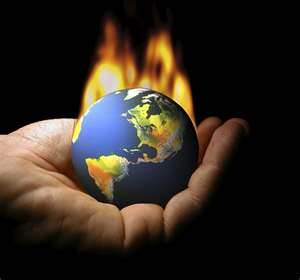
3/11/2013 11:53:06 AM
In eastern North America, people are accustomed to experiencing distinct seasons at distinct times of the year. Similarly, the Arctic and its plants and animals are accustomed to distinct seasons, particularly extremely cold winters and short summers, when plants and animals rapidly squeeze in the growth that winter prevents.
Oliver Taylor
But new research published yesterday in the journal Nature Climate Change shows that the differences between those Arctic summers and winters are lessening. Winter is becoming warmer — a lot warmer.
“The colder seasons are warming more rapidly than the summer,” said Liang Xu, a co-author on the study and a doctoral student at Boston University.
The study, funded by NASA, used both ground and satellite data to look at how changes in temperature are affecting vegetation. A team of authors from seven countries, including the United States’ Woods Hole Research Center, contributed to the research.
Showing that Arctic winters are warming a lot more than the other seasons is significant, said Ranga Myneni, another co-author of the study and a BU researcher who has been working on the impacts of temperature increases on the Arctic and boreal regions for decades.
“Most of the time, people talk about global warming at a steady rate, 1 degree Celsius per decade. That does not really even convey what it means,” Myneni said, because the warming in the north is happening so much more in the winter.
More greening, trees and forest fires
In the Arctic, this means the region is getting greener, with unknown impacts to the ecosystem, Myneni said. The study found that 32 to 39 percent of the Arctic had an increase in plant growth over the past 30 years.
“It is a big deal because in the north … there are no trees, it is mostly grasses, lichen and mosses, and now you are creating sufficient warmth for trees to grow,” Myneni said. “So the trees will try to move north. What will that do to existing Arctic vegetation? We don’t know.”
Bruce Forbes, a research professor at the University of Lapland’s Arctic Center who works with the reindeer-herding Nenets people of Russia’s Arctic, says the transition of the tundra into trees is already affecting them.
In the past 30 years, areas that used to be pasture and shrubs are becoming trees and large shrubs, he said. “[Nenets] can notice the shrubs increasing to tree size because they use the same campsites year after year.” This affects the reindeer herders because they have to avoid these areas, since they can lose their reindeer in the denser growth.
“So far, they are just trying to avoid these areas, but that is becoming more difficult” as the quantity of shrubs and trees increases, Forbes said. Oil and gas development in the region has also shrunk the availability of pasture, another complication in addition to climate change.
Long-range forecast: Detroit-like weather
Boston University’s Myneni said that because seasons are so important for a variety of ecological processes, he thinks the rapid changes in seasonality will lead to some mismatches in the food web, although it is currently hard to predict exactly how this will play out.
The higher temperatures may contribute to more growth in the Arctic, but in the boreal region there are mixed effects by continent.
North America’s boreal region has higher temperatures but has also been drier. This means trees are experiencing drought, increased fire risk, and more pest and disease outbreaks. So this region of the boreal forest is actually getting less green.
The Eurasian boreal areas, though, have seen enough precipitation to keep some of those effects at bay. Whether this is a trend that will hold true for the future remains to be seen, Myneni said.
Between 1951 and 1980, the temperature profile of the Arctic — the graph that shows how temperatures change season to season — resembled that of lands north of 65 degrees latitude, or just above the latitude of Fairbanks, Alaska. By the decade of 2000-2010, the temperature profile resembled that of lands above 61 degrees north, or closer to Anchorage, Alaska — 360 miles south of Fairbanks.
At the end of this century, the authors predict the temperature profile of the Arctic could resemble that of lands around 42 degrees latitude — about the latitude of Detroit.
Myneni’s group has created a website to explain its work to the public.
Reprinted from Climate Wire with permission from Environment & Energy Publishing, LLC. 202-628-6500. E&E Publishing is the leading source for comprehensive, daily coverage of environmental and energy issues. Click here to start a free trial to E&E’s information services.
Continue Reading on EENews.net >
 I have written articles before on global warming and climate change, and it is time to write another one. Back 10 years ago I remember an article by a climatologist that stated that once the CO2 levels in our atmosphere reached 350 ppm (parts per million) it was over for all things living on earth, the fat lady had song. Well as time went on 350 ppm was changed to 360, 375, 385, and finally 400 ppm. So barring any changes to the tipping point level, we have made it to a level that will go down as the end gamer.
I have written articles before on global warming and climate change, and it is time to write another one. Back 10 years ago I remember an article by a climatologist that stated that once the CO2 levels in our atmosphere reached 350 ppm (parts per million) it was over for all things living on earth, the fat lady had song. Well as time went on 350 ppm was changed to 360, 375, 385, and finally 400 ppm. So barring any changes to the tipping point level, we have made it to a level that will go down as the end gamer.
